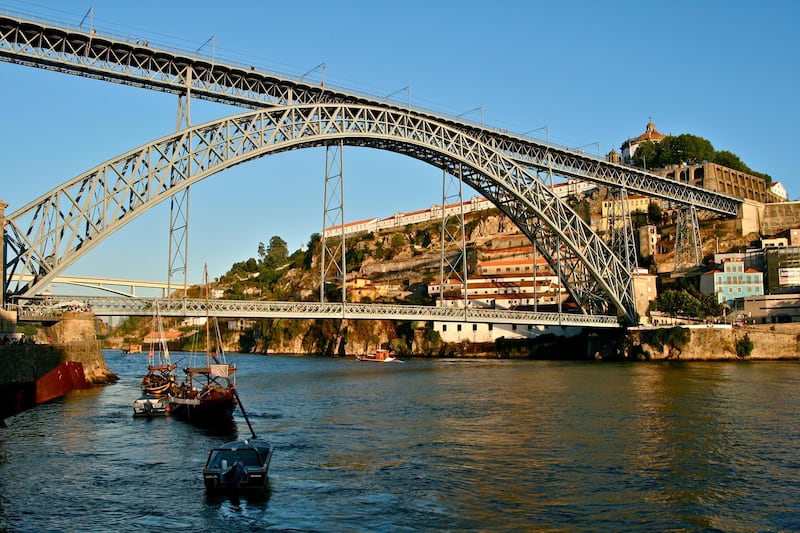I feel the uncomfortable tug on my flip-flop as the person behind me treads on it. I turn around and an elderly man gives me an apologetic nod. In front of me, a bottleneck is building as foot traffic on the lower deck of Porto’s Dom Luis Bridge slows almost to a halt.
I stand on my tiptoes, trying to see what's causing the hold up.
A few metres ahead, a small crowd of backpack-laden tourists and sun-blasted holidaymakers gather. The pavements on either side of the bridge are so narrow that any interruption in the pedestrian flow is almost guaranteed to cause a delay. Ducking under the arm of a tour guide who is frantically waving a flag-topped pole in the air, I elbow my way towards the front of the crowd. In front of me, a gangly teenager, stripped down to a pair of black shorts and some grey Nike trainers, seems to be the cause of the hubbub.
He proceeds to hoist himself up until he is standing squarely on the top of the fence that runs around the perimeter of the bridge. The crowd is quiet, bar the occasional tsk’ing of a Porto local trying to navigate through the crowd blocking the way on this Tuesday afternoon in Portugal’s northern capital.
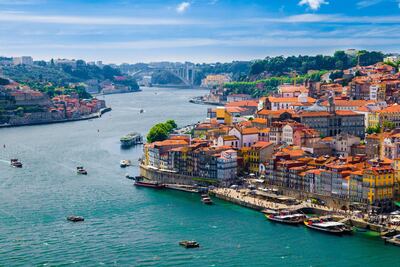
Built in 1886, the bridge is one of six that straddle Porto’s River Douro. The tutting is clearly directed at the tourists, not at the boy who is merely partaking in something that has long been a tradition for the children living riverside in this Portuguese city.
Balancing precariously on the side of the bridge, the boy looks around as if sizing up his audience. Seemingly satisfied, he fixes his gaze on the river rushing some 20 metres below. He shrugs his shoulders up and down – it’s hard to know whether he’s feeling cold or simply psyching himself up for the leap. His hand touches his forehead, his lower chest and then floats across to both of his shoulders – the sign of the cross.
Seconds later, he crouches briefly before launching himself in the air. For a brief moment, his body floats higher than the height of the bridge’s lower deck and his legs gape apart, straddling nothing but air. A few seconds later, his feet smash hard into the surface of the Douro River below, breaking the water with a clearly audible smack.
A plume of white bubbles rises to the surface of the inky green river and there's a collective pause as the crowd peers over the side of the bridge like an assembled mass of meerkats. Two seconds pass, then a third and a fourth. On the fifth, just before panic grips the crowd, he pops his head above the water and begins swimming fiercely to the riverbank, battling the strong currents.
There’s a ripple of applause from the crowd on the footbridge, before the people slowly begin to disperse. Swept up in the movement, I continue my walk back towards the city’s Ribeira district.
Nestled along Porto’s main artery, Ribeira is one of the city's most picturesque regions. Belonging to the Old Town, the area is filled with terracotta rooftops, wonderfully decorated facades and brightly coloured narrow buildings. I’m staying in one of the oldest hotels in the city, the Pestana Vintage Porto, which glows a sunflower yellow in its prime corner position.
A walking city
It’s late afternoon and the winding streets are beginning to come alive for the evening. The smell of grilled seafood wafts from the countless traditional restaurants lining the riverfront. Street performers dance, twirl and acrobat under the shadow of the bridges, a cap on the ground positioned perfectly to collect tourist tips.
I take a left turn and head further into the old town, the cobbled street rising sharply in front of me. Despite its steep hill climbs, Porto is very much a walking city. From the airport, it's a €2 (Dh8) metro ticket to town and after that, everything that you need to see is within walking distance.
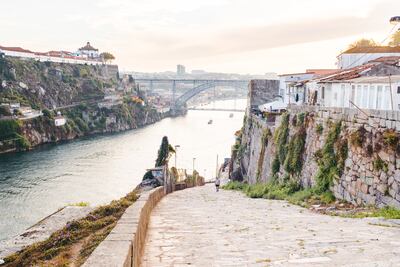
I'm headed to one of Porto's oldest bookstores, a tiny place on the Road das Carmelitas that has been garnering considerable international attention of late, thanks to its reputation as one of the inspirations for Harry Potter's Hogwarts. Stepping inside Livraria Lello, which was established in 1906, it's easy to see the similarities between the flowing concrete staircase that commands centre stage in the bookstore and the world-famous wizarding school – author J K Rowling apparently frequented this spot when she lived in the city. Visitors can redeem the value of their entry tickets towards the price of a book, so I select a turquoise and gold-bound Livraria Lello edition of The Travels of Ibn Battuta before heading back into the street.
There, a gaggle of youngsters clad in black capes is waiting to cross the road. At first, I think they’re costume-sporting Potter fans. Turns out they’re actually students at the University of Porto, where black capes are the uniform de facto. Perhaps Rowling was inspired by more than just Porto’s bookstore.
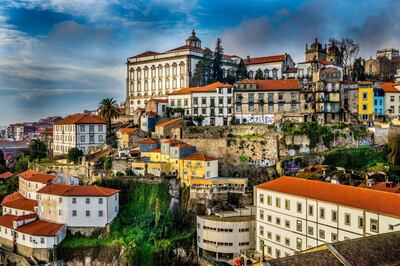
Wizardly adventures over, I make for the city's tallest point, Clerigos Tower. When it was built, it was the tallest building in the country, but at just 76 metres, that record has been claimed by other Portuguese structures many times over. Nonetheless, it cuts a striking figure perched atop a cobbled street in the heart of the city. I decide to embark on the journey to the top – which means climbing 230 increasingly narrow steps. I'm glad I don't suffer from claustrophobia, but it's more than worth it for the view of the city's terracotta rooftops from the ledge of the belfry tower.
From the tower, it’s about a five-minute walk to Sao Bento Railway Station, so I make my way there. I’m not actually catching a train; instead I’m here to marvel at the intricate ceramic art that’s made up of more than 20,000 hand-painted tiles. Covering the walls, floor and ceiling of the French Beaux-Arts-style station, the azulejo tin-glazed blue and white tiles tell the story of Portugal’s history, complete with detailed depictions of royal weddings, battles and routine daily life.
Evening is creeping in, so I venture back outside to track down the spot where I’m scheduled to eat dinner. As I meander through the streets, I hear the occasional notes of Fado music wafting out of bars and cafes. The melancholic Portuguese singing dates back to the 1820s and tells tales of longing, sadness and loss. The notes drift around the city in a hauntingly beautiful way, as if part of its soul.
Dinner is at Adega Sao Nicolau, a tiny wooden-clad restaurant run by a Portuguese man who's been serving up authentic native dishes since he was eleven. Here, in a restaurant that attracts as many locals as it does tourists, I opt for some traditional dishes from a menu featuring Porto classics such as octopus fillet, salted cod and tripas a moda do Porto.
On the restaurant's tiny terrace, there's a view down to the river and, as night falls, the other side of the water clamours for attention. Vila Nova de Gaia is where Porto's most famous creation, Port, has its home. The fortified beverage is not actually made here – that happens upstream in the Douro Valley – but it is stored in the district's vast cellars.
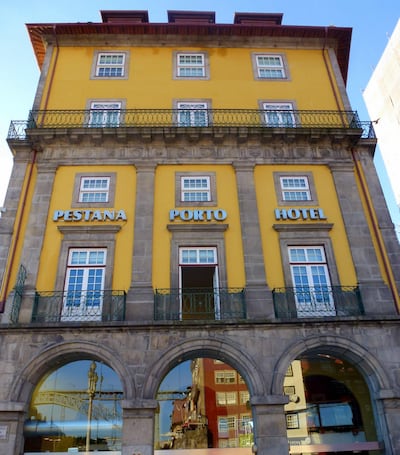
As the other side of the Douro twinkles, I make my way back along its banks to Ribeira. I reach my hotel and make straight for my room, exhausted after a day’s sightseeing. As part of the turndown service, a Pastel de Nata has been placed on the bedside table. These traditional custard tarts are tiny slices of Portuguese deliciousness, and you can find them in any bakery, supermarket or cafe in the city.
Taking my tart, I retire to my balcony to watch street performers and loved-up couples stroll along the banks of the Douro below. As the midnight hour descends, an almost full moon is perfectly reflected in the water below, fittingly sealing another day in the city that lent its name to the entire country.
